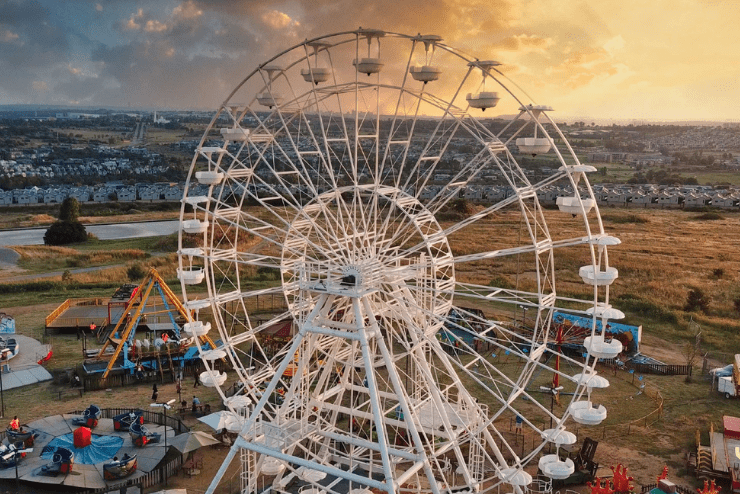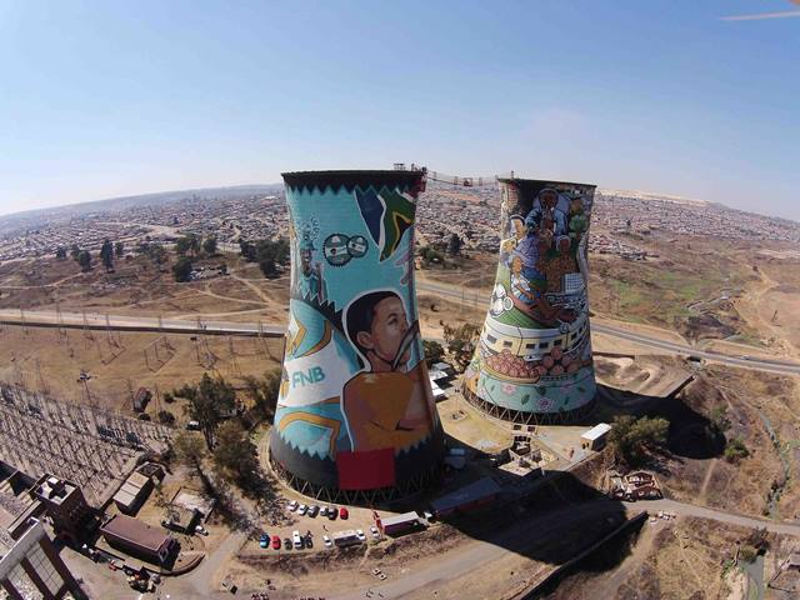3 Easy Facts About Johannesburg North Attractions Shown
3 Easy Facts About Johannesburg North Attractions Shown
Blog Article
The Ultimate Guide To Johannesburg North Attractions
Table of ContentsGet This Report on Johannesburg North AttractionsThe 6-Minute Rule for Johannesburg North AttractionsJohannesburg North Attractions Can Be Fun For AnyoneThe 2-Minute Rule for Johannesburg North AttractionsThe 9-Minute Rule for Johannesburg North Attractions3 Easy Facts About Johannesburg North Attractions Described
The city grew on the side of the Witwatersrand Main Coral reef, a below ground stratum of gold-bearing quartz-silica conglomerate that arcs for hundreds of miles beneath the Highveld - Johannesburg North attractions. Most of the gold mines in the city discontinued operation in the 1970s, but in its day the Witwatersrand gold industry accounted for more than 40 percent of the world's annual gold production.Johannesburg has a temperate climate. The city takes pleasure in concerning eight hours of sunshine per day in both winter and summertime.
What rain the city receives falls almost solely in the summer season, frequently in amazing late-afternoon electric tornados. Air air pollution poses a considerable issue, particularly in the winter season, when thermal inversions hinder the westward flow of air from the Indian Sea. Contamination is most extreme in the largely settled Black areas on the city's perimeter, where lots of homeowners still count on coal for gas.

10 Simple Techniques For Johannesburg North Attractions
The balance of the city is occupied by whites. Lodging varies in personality and top quality.
Physical growth, although somewhat restricted by transport, proceeded swiftly as immigration to South Africa, and Johannesburg in particular, raised considerably. This trouble was addressed in the 1930s when the car was presented in automation to South Africa. Autos were, essentially, constrained to the well-off, and allowed them to transfer to the north of the city and commute into the centre.
A lot of bad residential areas were mixed, with poor blacks and whites living with each other, although the affluent residential areas were typically scheduled for whites. This altered with the political election of the National Party in the 1948 elections, that started to formalise the system referred to as discrimination. Racism formally designated which residential areas each race can live in under the Group Areas Act.
The previous system of eleven phoned number areas was reorganised in 2006. Marshalltown, as seen from the top of the Carlton Centre. The M1 and M2 run behind the buildings, and the southern suburbs prolong past the freeway border. The internal city of Johannesburg is situated within the city's Area F. The approximated populace of the area is 200,000, [] but the variety of individuals living in the central city on an informal basis is unidentified, as many are illegal immigrants. The majority of higher-income homeowners and white individuals have actually relocated to the north suburban areas and have been changed by lower-income black individuals. The joblessness, education, and age profiles of the location are all unidentified, because of the problem of getting trustworthy information about the location.
Getting My Johannesburg North Attractions To Work
Centred on the CBD, the region consists of the residential areas of Yeoville, Bellevue, Troyeville, Jeppestown, and Berea to the east. To the west it infects Pageview (Johannesburg North attractions) and Fordsburg. There are little industrial parks to the south, such as City West-Denver and Benrose. Around 800,000 commuters pass via the central city daily, and it operates as a regional shopping node for visitors from the southerly suburbs. Yeoville and Bellevue have a mix of apartment and single household units on tiny great deals. The area is situated on a mountainous divide that ranges from east to west. One of the most conspicuous geographical function is Observatory Ridge, which is named for the big observatory located on it. The leisure rooms are no more utilized, as a result of safety and security troubles.

See This Report about Johannesburg North Attractions
R. Tambo International Flight Terminal). The eastern suburbs are some of the oldest areas of Johannesburg, there are huge communities of Jewish and various other European backgrounds, the majority of the populace is English speaking. There are three golf courses in addition to a variety of secured ridges with viewsites. There are several strong and up-market amusement and buying areas in the east click to read more such as the Eastgate Shopping Center and the Greenstone shopping center.
Initially developed to house male migrant workers, lots of have been improved as homes for couples and family members. The residential area was not historically permitted to create work centres within the location, so nearly all of its homeowners are travelers to various other components of the city.
A Biased View of Johannesburg North Attractions
The N1 Western Bypass links the northern suburban areas with the Extra resources north-western suburban areas. The property locations in the northern suburbs are generally official, with no substantial areas of informal real estate, or housing that does not have a permanent framework. Although this is a well-known area, there is a fad of land use adjustment from property to business, particularly along main arterial roadways and around recognized nodes.
Roads to the eastern and west are much less well developed, as there useful content are no highways taking a trip in that direction. In the direction of the northern border of the city, the thickness of advancement reduces, leaving big areas of undeveloped land around Midrand.
Get This Report about Johannesburg North Attractions
The first suburb to the north of the central city is Parktown, which is situated on a hillside ignoring the central city and Hillbrow. It has many wealthy citizens and Edwardian-style manors, in addition to the Education and Clinical schools of the College of the Witwatersrand. The big concrete Charlotte Maxeke Johannesburg Academic Medical Facility controls the skyline of Parktown.
Report this page